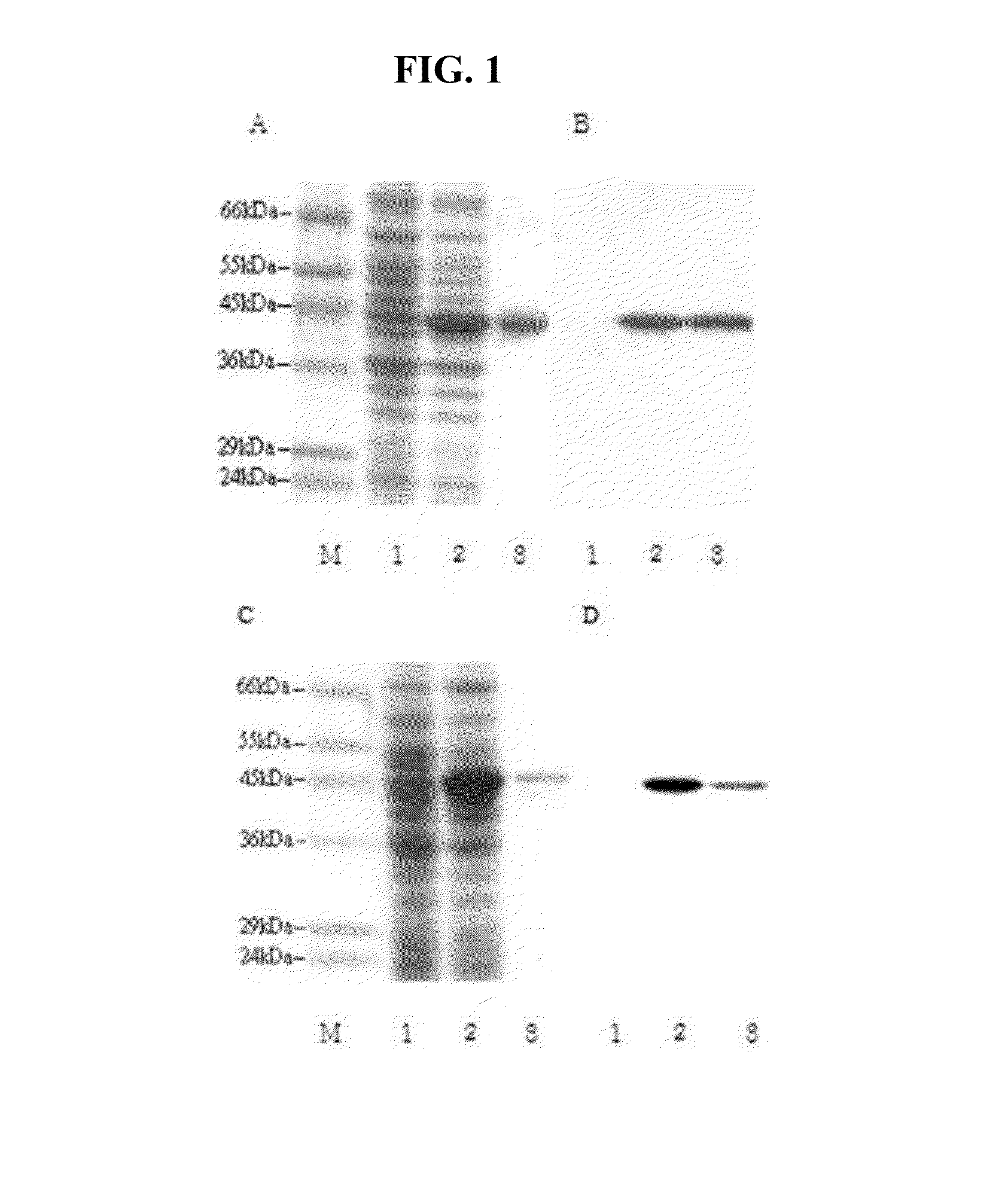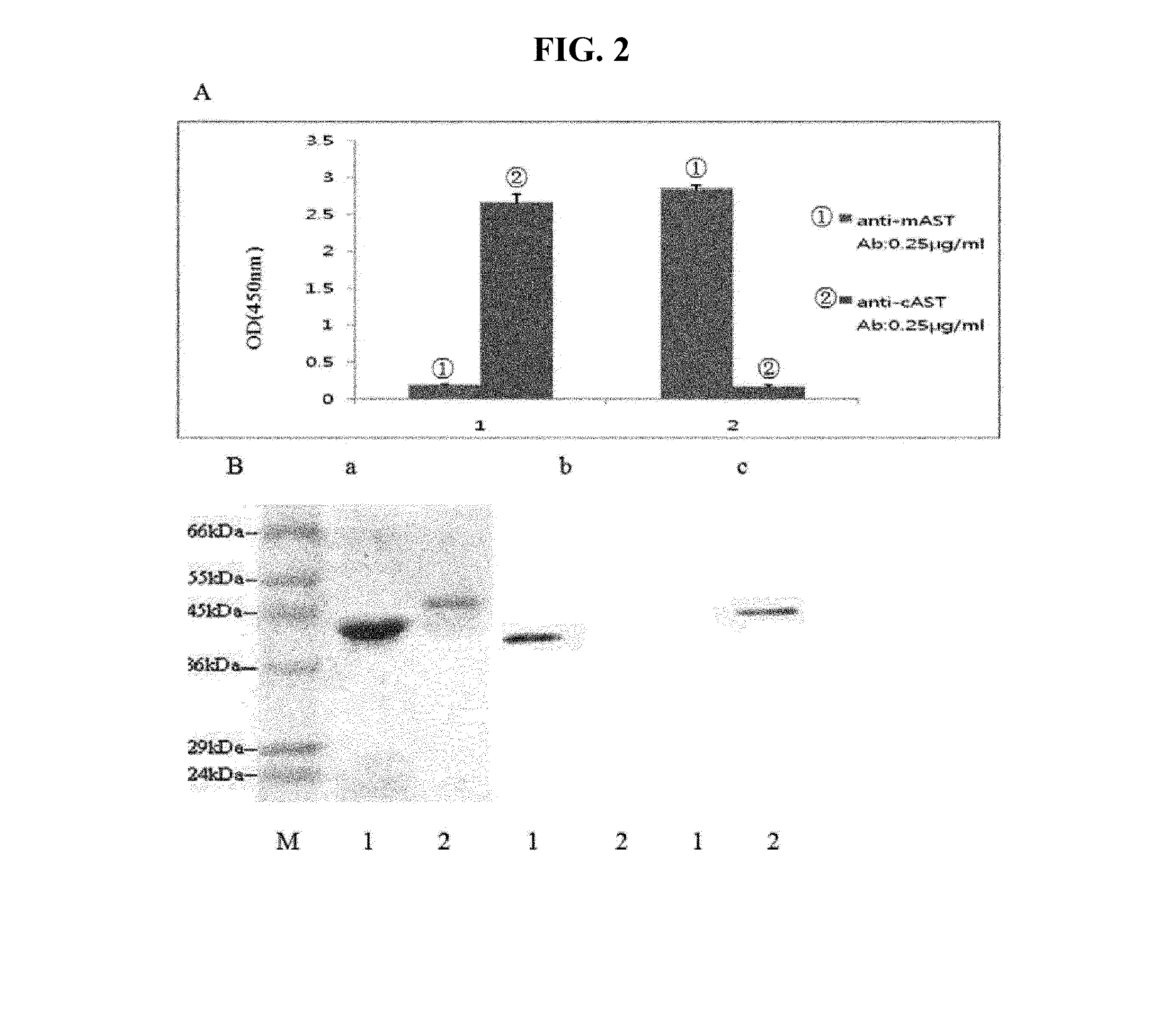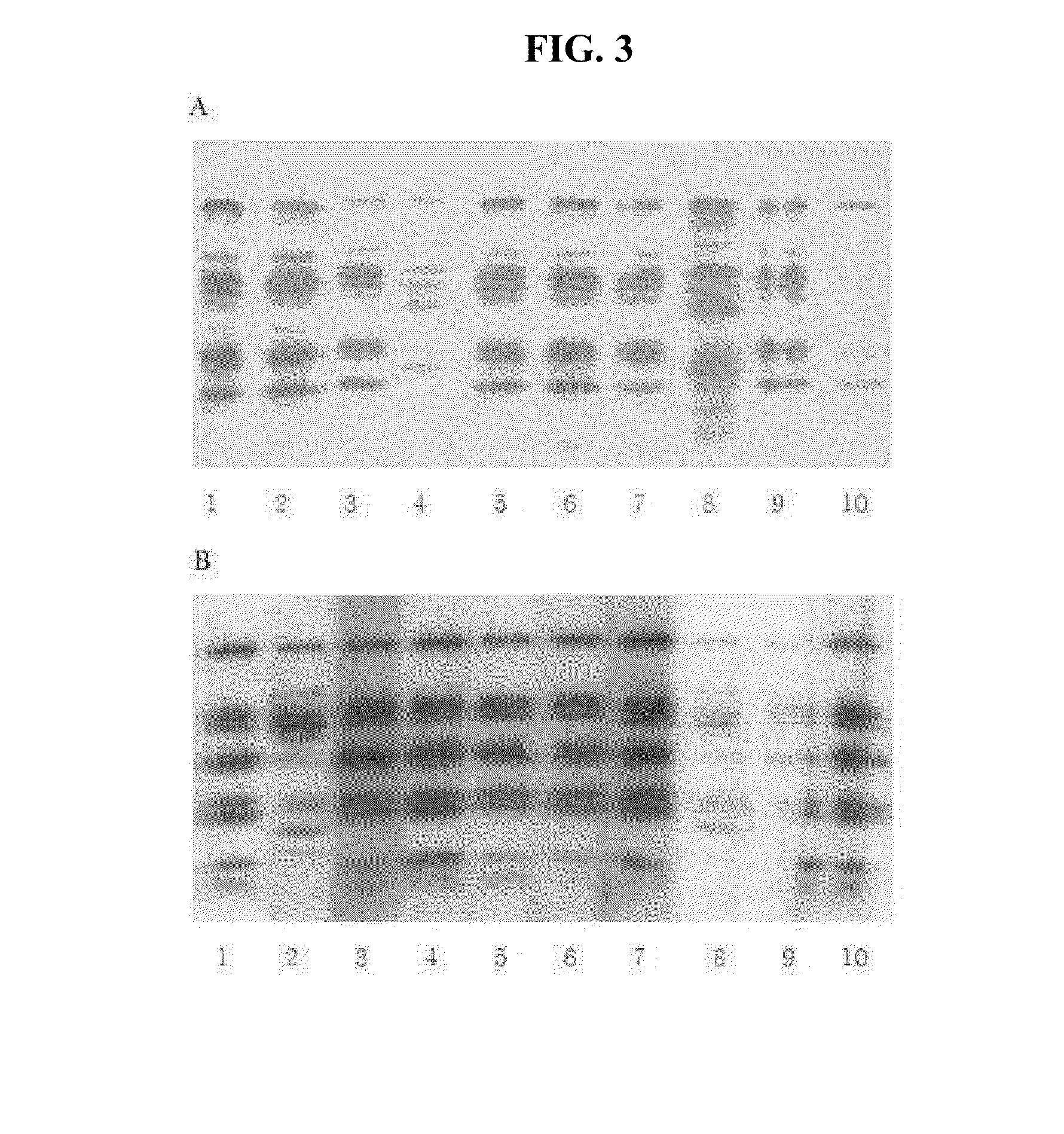Kit and method for diagnosis, prognosis or monitoring of liver disease through measurement of amount of ast
- Summary
- Abstract
- Description
- Claims
- Application Information
AI Technical Summary
Benefits of technology
Problems solved by technology
Method used
Image
Examples
example 1
Purification of Aspartate Aminotransferase
1-1. Expression and Purification of Aspartate Aminotransferase
[0080]Human liver cytosolic aspartate aminotransferase (cAST) and mitochondrial aspartate aminotransferase (mAST) mRNAs were isolated from human liver tissue and cDNAs were synthesized from the mRNA by RT-PCR, the product of which were then cloned into a TOPO® TA cloning vector (ThermoFisher Scientific, U.S.A.) and then into a pET21a(+) vector containing 6× his tag sequence (Novagen, U.S.A.). Then the cAST and mAST recombinants were expressed under the conditions (OD value: 0.5-0.7; IPTG: 0.1 mM; incubation time: 3 hr, temperature: 37° C.) and purified by Ni-NTA resin. The purified proteins were confirmed by western blot.
[0081]Human gene for cAST is 1,245 bp in length encoding 414 amino acids with a molecular weight of about 45 kDa. Human gene for mAST is 1,293 bp in length encoding 430 amino acids with a molecular weight of about 47 kDa. The recombinant proteins were confirmed by...
example 2
Production of Monoclonal Antibodies
[0083]Immunization, cell fusion and screening hybridoma cells were performed by the methods as described below. Briefly, 6-8 weeks old Balb / c mice were injected with a purified recombinant cAST or mAST. Then the cell fusion and screenings were performed to select a total of 20 monoclonal hybridoma cell lines of cAST and mAST. Then the cells from 20 cell lines were peritoneally injected into a mouse (6-8 weeks of Balb / c), from which ascites are retrieved. The ascites were purified to recover 20 monoclonal antibodies. Anti-cAST antibodies were named as HCC 1 to HCC 10, and anti-mAST monoclonal antibodies were named as HCM 1 to HCM 10.
2-1. Complete and Incomplete Dulbecco's Modified Eagle Media (DMEM) Preparation
[0084]Two bags of powdered medium was dissolved in about 1700 ml of double distilled water (DDW) and used DDW to wash the bags to make sure all powder was dissolved in the DDW, and then 7.4 g of sodium bicarbonate was added to the solution. Th...
example 3
Characteristics of Monoclonal Antibodies
[0097]The antibodies prepared as in Example 2 were characterized. cAST and mAST monoclonal antibodies produced from the monoclonal hybridoma cell lines were named as HCC1-HCC10 and HCM1-HCM10, respectively. Indirect ELISA, antibody isotyping and western blots were performed.
[0098]Results are shown in Table 1. Among 10 monoclonal antibodies, two monoclonal antibodies HCC4 and HCC5 were selected as optimal match pair to detect cAST, where HCC4 was used as a capture antibody and HCC5 was used as a detection antibody. In the case of mAST, HCM4 and HCM8 were selected as a capture antibody and a detection antibody, respectively. The four antibodies were then used in this Example. The cAST monoclonal antibody HCC4 (cAST 1A2C6), HCC5 (cAST, 5C3F8) were deposited as KCTC 12483BP and 12484BP, and mAST antibody HCM4 (mAST, 2E6D1) was deposited as KCTC 12485BP Sep. 4, 2013 in in Korean Collection for Type Cultures.
TABLE 1Characteristics of monoclonal anti...
PUM
 Login to View More
Login to View More Abstract
Description
Claims
Application Information
 Login to View More
Login to View More - R&D
- Intellectual Property
- Life Sciences
- Materials
- Tech Scout
- Unparalleled Data Quality
- Higher Quality Content
- 60% Fewer Hallucinations
Browse by: Latest US Patents, China's latest patents, Technical Efficacy Thesaurus, Application Domain, Technology Topic, Popular Technical Reports.
© 2025 PatSnap. All rights reserved.Legal|Privacy policy|Modern Slavery Act Transparency Statement|Sitemap|About US| Contact US: help@patsnap.com



